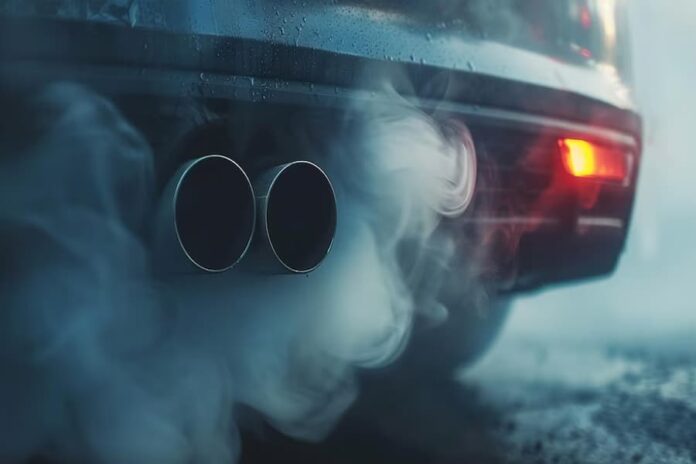The UK has a thorough legal system in place to regulate vehicle exhaust carbon dioxide emissions, which is essential for safeguarding the environment and public health. These rules and laws comply with international accords as well as national laws. The main rules and laws controlling emissions from automobiles in the UK are examined in detail here. Through improved exhaust flow, the performance exhaust system increases your car’s horsepower as well as torque, giving it an additional aggressive soundtrack and increased engine economy.
Why Do You Use UL Solutions?
Use UL Solutions to help you navigate the ever-changing and complex regulatory environment of the automobile industry. To assist you in reaching your market objectives, the worldwide facilities and accessibility to market specialists offer tools and guidance.
Through our internet-based platform, Global Compliance Management (GCM), you can also stay up to date on regulatory information. Over a hundred new regulations are implemented each month. The GCM software suite facilitates the process of navigating the complex worldwide regulatory landscape, encompassing standards, marking, labelling, testing, as well as certification specifications for a wide range of merchandise categories, including batteries as well as connected car technologies. GCM gives you the confidence to navigate compliance.
The Plans
To help the UK meet its emissions reduction objectives and achieve zero net emissions, the Order establishes four new GB-wide carbon trading programmes (the Schemes), which are scheduled to go into effect in January 2024:
- The car registration trading scheme (CRTS),
- Van Registration Trading Scheme (VRTS),
- Car carbon emissions trading strategy (CCTS),
- Van carbon monoxide selling schemes (VCTS) are the four non-zero emission automobile registration trading schemes.
Employee Responsibilities
Both drivers’ employers company themselves possess a general need to keep their cars in good working order so that they don’t release harmful fumes, smoke, or noise that is excessive.
Drivers ought to:
- Keep the proper amount of fluid in the AdBlue or Eolys storage container (for vehicles that are equipped appropriately) at the base or while driving as needed.
- Report any loss or insufficiency of AdBlue/Eolys solution right away.
- Any signs of emission of smoke produced by the vehicle exhaust, malfunctioning emissions equipment, or declining vehicle performance should be reported right once.
The Environment Agency’s Function
One important component of implementing car emissions laws is the Environment Agency.
- Monitoring and Enforcement: The Environmental Protection Agency is in charge of keeping an eye on the quality of the air and making sure that emissions regulations are being followed. It may engage in disciplinary action regarding non-compliant automobiles and perform routine inspections.
- Data Gathering and Reporting: To support public health programs and policy decisions, the Agency also gathers data on air quality and vehicle emissions.
Implications For Safety
A poorly adapted car can kill its occupants as well as contaminate the surrounding air. When performance-enhancing modifications are made to the engine management module and the emissions control mechanism is removed entirely or in part, the result could be a markedly increased concentration of dangerous exhaust pollutants that can enter the vehicle’s interior. Vehicle occupants may end up dying as a result of improperly installed parts or unauthorized modifications.
Consequences For Health
Car emissions regulations have gotten stricter to enhance air quality and safeguard human health. Vehicle makers have created measures to address pollutants with the value of particulate matter, carbon monoxide, and sulphur dioxide. They entail the employment of technology including selective catalyst reduction systems, diesel particle filters, exhaust gas recirculation, and catalytic converters, as well as increasingly sophisticated engine management systems.
When emissions control technology is tampered with or removed, harmful vehicle exhaust gases can rise significantly:
- Carbon monoxide – a colourless, odourless and flavourless gas that is very deadly and is one of the most prevalent causes of lethal poisoning, accounting for roughly 25 deaths a year in the UK
- The offensive-smelling gas nitrogen dioxide may irritate the pupils and lungs and lower immunity to lung infections.
- Its effects are thought to be responsible for about 23,500 fatalities annually in the UK. It also plays a major role in the creation of photochemical smog, which hurts human health.
- Particulate matter is made up of microscopic solid and liquid particles that, when inhaled, can have detrimental consequences on one’s health.
- Particulate matter is thought to be responsible for about 29,000 premature deaths in the UK because it raises the risk of lung cancer and cardiovascular disorders.
Prospects And Difficulties
In the UK, the world of automobile emissions regulations is changing quickly.
- Developing Technologies: As vehicle technology advances, particularly that of electric and hydrogen-powered automobiles, new rules addressing emissions from these developing technologies will be required.
- Public Knowledge and Compliance: As people become more conscious of the problems with air quality and the harm that emissions do to their health, there is a growing call for more stringent laws. Maintaining compliance among automakers and operators is still quite difficult.
Final Words
A comprehensive legal framework encompassing a variety of national and municipal laws and regulations has been constructed by the UK to regulate vehicle exhaust emissions. The UK seeks to dramatically lower car emissions through continued improvements and the implementation of innovative technology, improving public health and air quality. To achieve international climate obligations and accomplish these goals, it will be imperative to maintain enforcement of current policies and implement new ones.
Visit Quice for more informative blogs.

